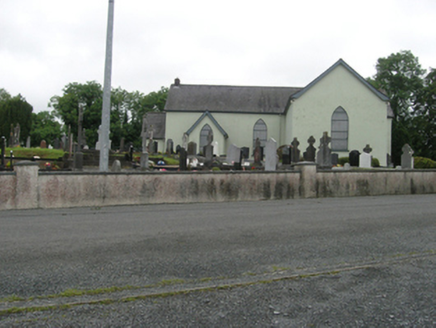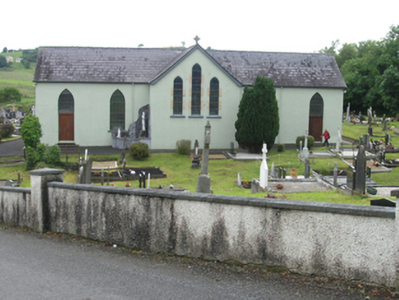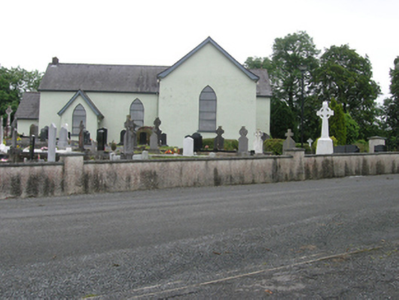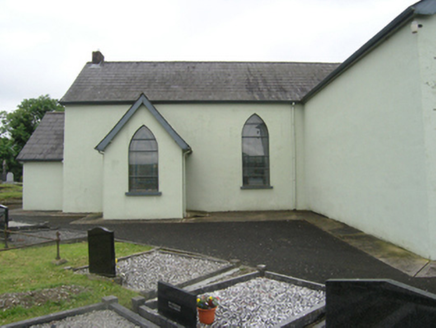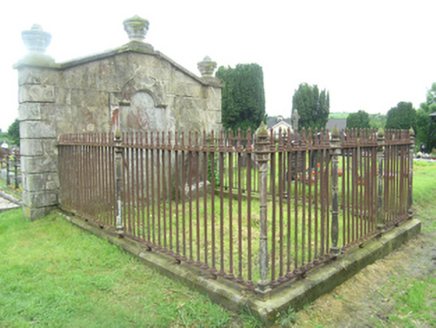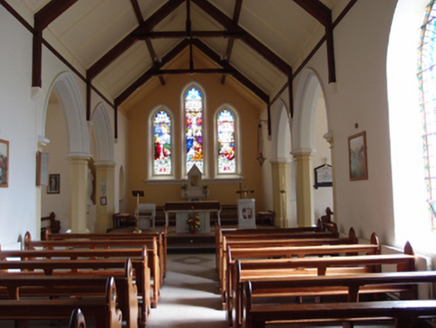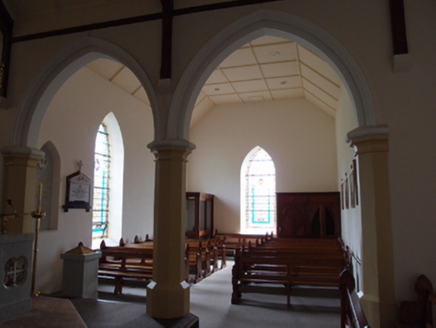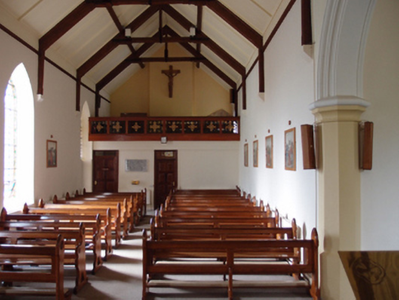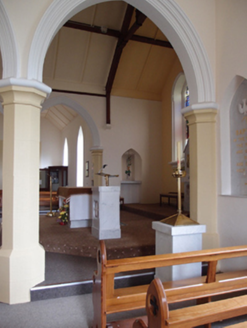Survey Data
Reg No
40401732
Rating
Regional
Categories of Special Interest
Architectural, Social
Original Use
Church/chapel
In Use As
Church/chapel
Date
1820 - 1825
Coordinates
262319, 312404
Date Recorded
05/07/2012
Date Updated
--/--/--
Description
Freestanding Gothic Revival cruciform-plan Roman Catholic church, built 1824, with two-bay nave. two-bay transepts, entrances facing south-east in outer bays of transepts on chancel side, porch to nave on south-west side. Chancel added to south-east and arcades inserted to transepts in c.1880. Refurbished 1988. Pitched slate roof altered to overail gables with timber barges, clay ridge tiles, plain brick chimneystack to north-west gable of nave, stone cross finial to chancel gable, and cast-iron rainwater goods. Smooth rendered walls. Lancet windows with plain reveals and stone sills. Square-headed window in east transept to accommodate stained glass from Cootehill Convent. Graduated triple lancet in chancel gable. Stained glass windows. Recent timber sheeted doors. Interior with timber collar braces and short kingposts to roof. Recent panelling to transept roofs. Narrow nave and chancel with plastered walls having two-bay arcades to east and west open into transepts with octagonal-profile columns having moulded capitals and tall bases, semi-octagonal responds, arcade arches rise to just below nave wallplate. Piers resting on altar step with post-Vatican II altar and ambo arrangement. Stained glass by Mayer & Co., Munich in addition to stained glass brought from Convent of Mercy Cootehill. Timber pews. Shallow gallery with timber balustrade and decorative cast-iron infill to north end of nave. Set in an extensive graveyard having large monument with rusticated urn-toppled piers and iron railings and posts to north-east of nave. Steel framed open belfry.
Appraisal
An prominently sited cruciform-plan church in an historic graveyard setting, with its internal arrangement showing an historic T-plan earlier disposition. The building and graveyard show continuous change and adaptation over nearly two centuries from its pre-Emancipation foundation through to the Vatican II changes and beyond. Simple without being severe, this chapel of ease in Drumgoon parish is the only one in the parish of the three, with Cootehill and Madabawn, to retain its early nineteenth century appearance.
